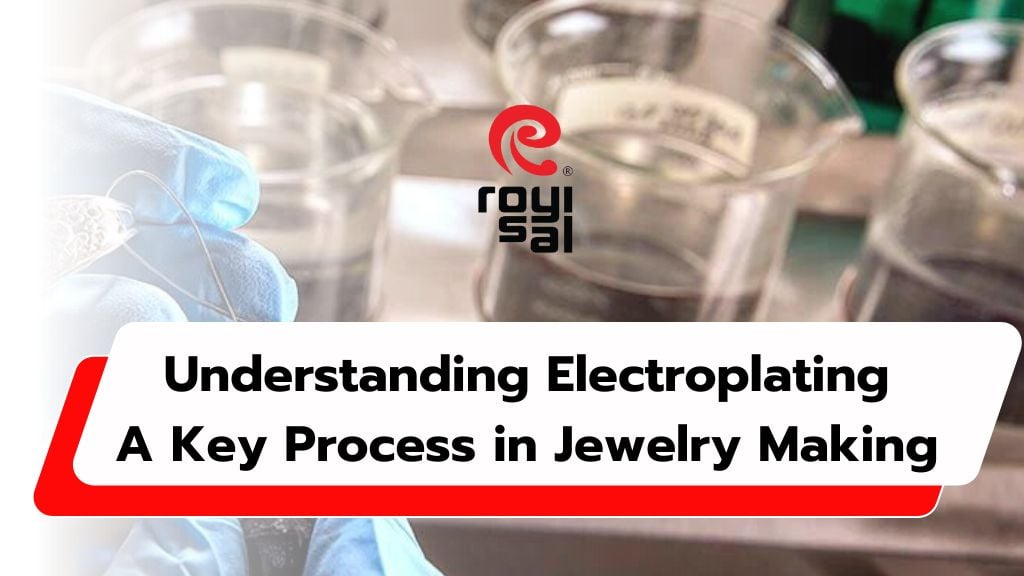 Electroplating is a crucial technique in the jewelry industry, responsible for enhancing the appearance, durability, and value of various metal pieces. This process involves depositing a thin layer of metal onto the surface of a substrate material through an electrochemical reaction. In the realm of jewelry making, electroplating is employed to achieve a range of desired finishes, colors, and properties.
Electroplating is a crucial technique in the jewelry industry, responsible for enhancing the appearance, durability, and value of various metal pieces. This process involves depositing a thin layer of metal onto the surface of a substrate material through an electrochemical reaction. In the realm of jewelry making, electroplating is employed to achieve a range of desired finishes, colors, and properties.
Understanding Electroplating: A Key Process in Jewelry Making
The Electroplating Process:
Electroplating begins with the preparation of the substrate material, which is typically made of metals like copper, brass, or silver. This material serves as the base onto which the metal coating will be applied. Before electroplating, the substrate is cleaned thoroughly to remove any dirt, grease, or other contaminants that could interfere with the plating process.
Once the substrate is clean, it is immersed in an electrolyte solution containing dissolved metal ions. A conductive electrode, usually made of the metal to be plated, is also immersed in the solution. When an electric current is applied to the system, metal ions from the electrolyte are attracted to the substrate surface, where they deposit and form a thin, adherent coating.
Benefits of Electroplating in Jewelry Making:
1. Enhances Appearance: Electroplating allows jewelers to achieve a wide range of finishes, including shiny, matte, textured, or colored surfaces. Common metals used for plating include gold, silver, rhodium, and platinum, each offering unique aesthetic properties.
2. Improves Durability: The metal coating applied through electroplating provides an additional layer of protection to the substrate material, making the jewelry more resistant to scratches, tarnishing, and corrosion. This enhances the longevity and wearability of the finished pieces.
3. Enables Versatility: Electroplating offers flexibility in jewelry design, allowing artisans to create intricate patterns, designs, and embellishments on metal surfaces. It also enables the use of alternative metals, such as brass or copper, as substrate materials, which can be plated with precious metals to achieve the desired look at a lower cost.
4. Economical and Efficient: Electroplating is a cost-effective and efficient method for applying metal coatings to jewelry pieces. It allows for precise control over the thickness and composition of the plated layer, minimizing material waste and maximizing resource utilization.
Considerations and Challenges:
While electroplating offers numerous benefits, there are also some considerations and challenges to be aware of. Proper surface preparation is essential to ensure adhesion and uniformity of the plated layer. Additionally, environmental regulations and safety precautions must be observed due to the use of chemical solutions and potential hazards associated with the plating process.
In conclusion, electroplating plays a vital role in the creation of high-quality and visually appealing jewelry pieces. By understanding the principles and applications of electroplating, jewelers can leverage this technique to achieve stunning results that meet the demands and expectations of today’s discerning customers.
If you desire further information or wish to discuss jewelry-making plans for your shop with our professional team, please don’t hesitate to contact us at [email protected]. We are fully prepared to provide you with the support you need.
Share this post

